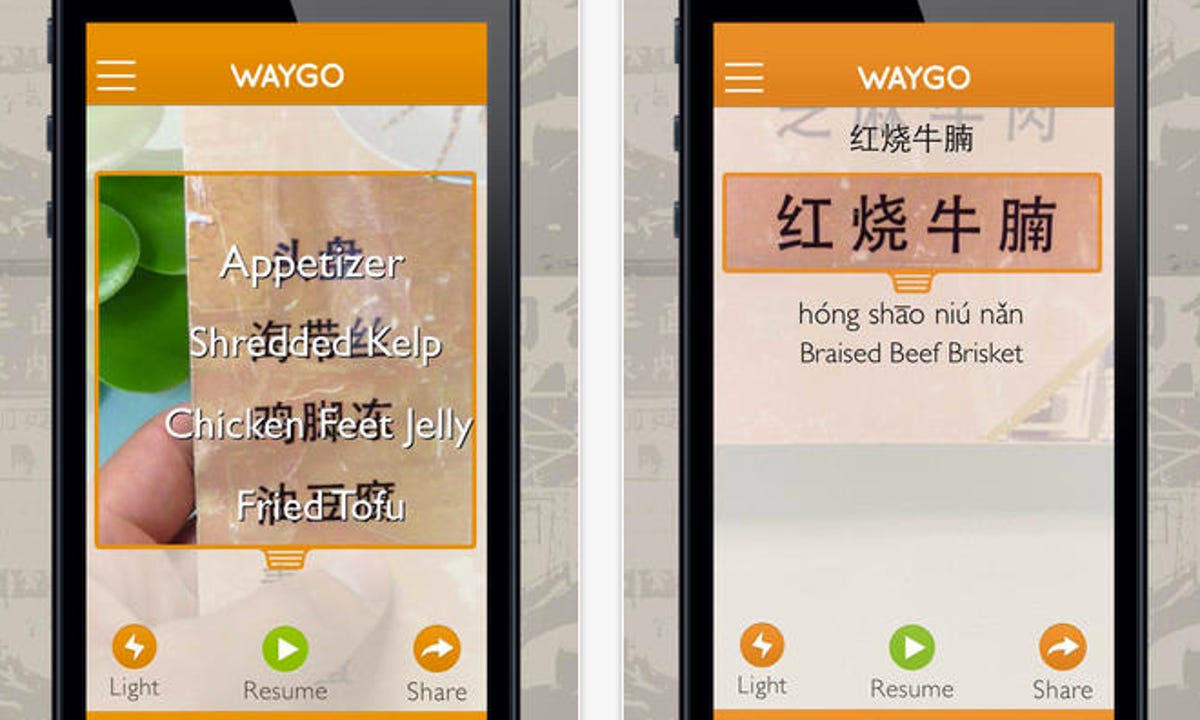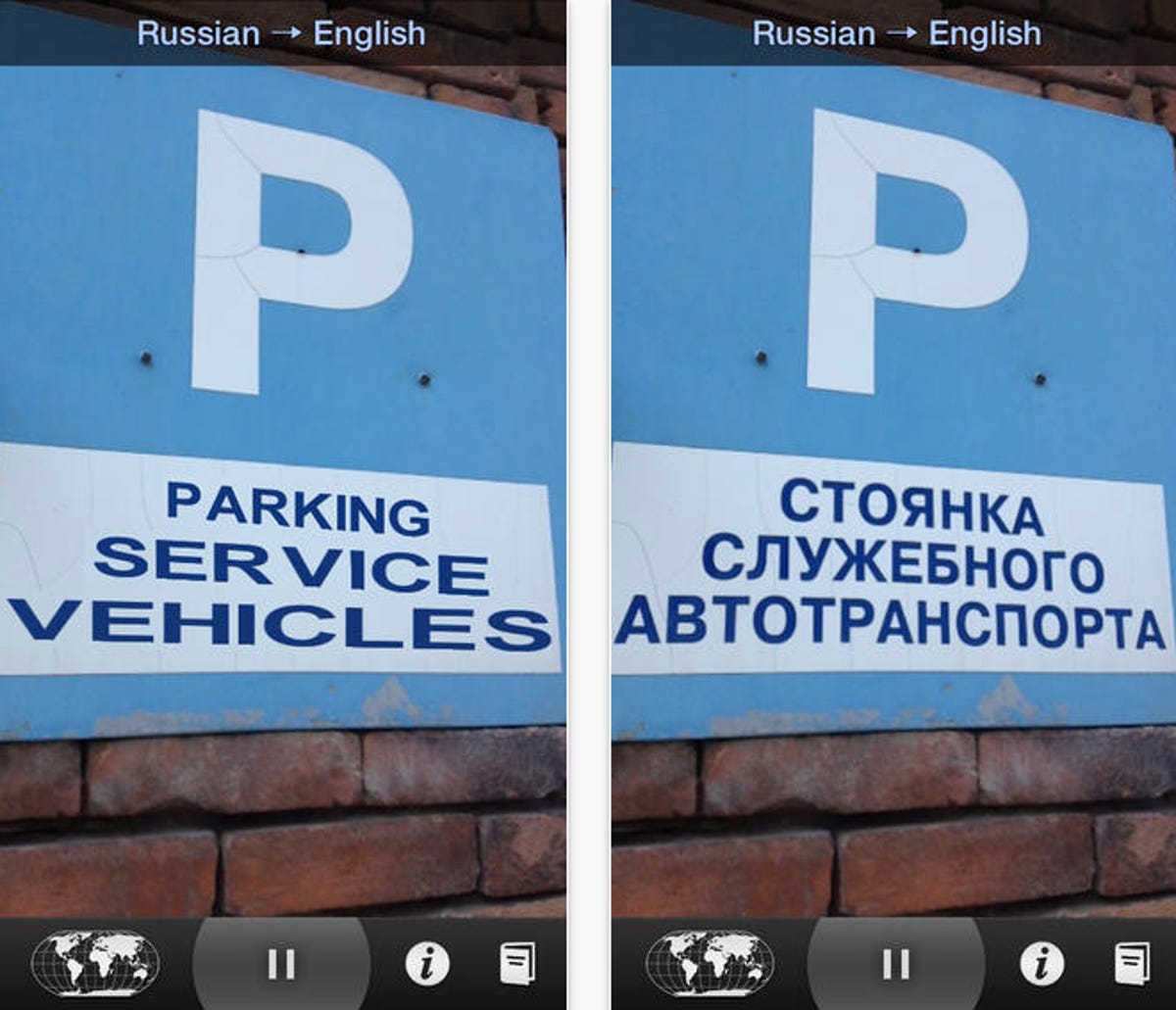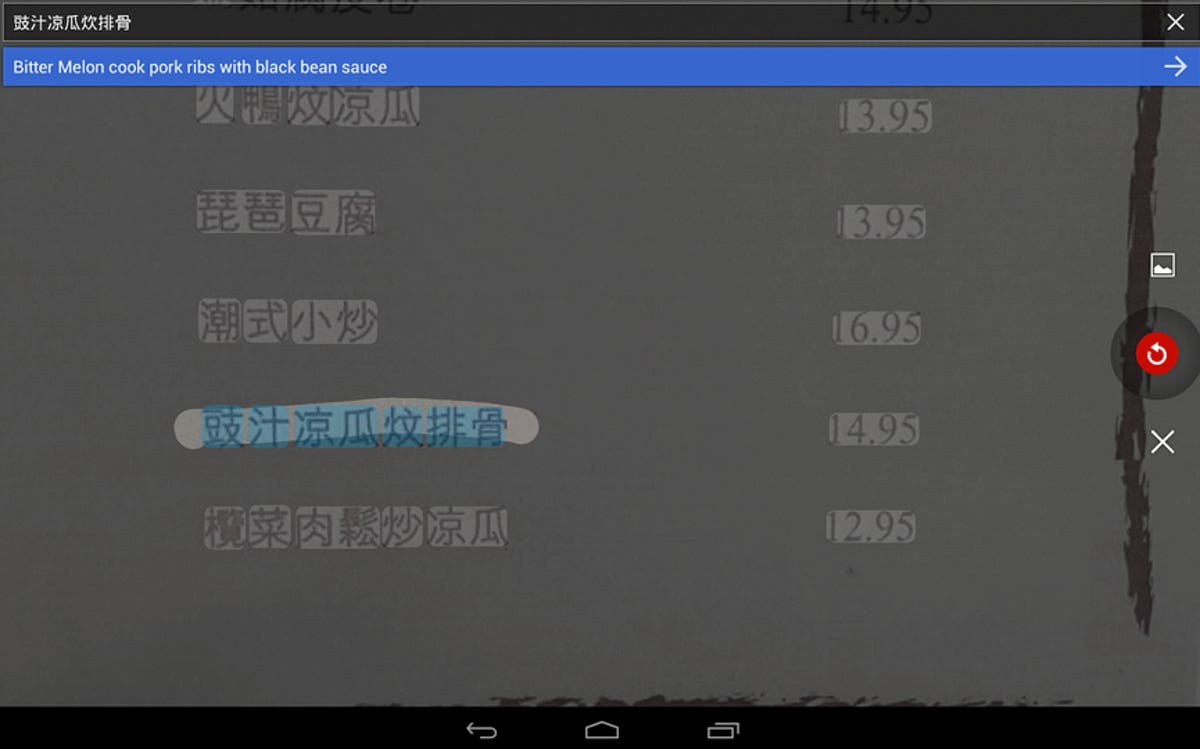

Now playing:
Watch this:
Instant foreign menu translations
5:34
Vacations don’t excite me — eating excites me. Your city may have the most breathtaking vistas, and the most beautiful museums, but when all is said and done, my best traveling memories revolve around food. And nothing bums out my travel gluttony more than a menu I can’t decipher.
Fortunately, whether you have an iPhone or Android phone, there are some useful apps out there that can help you translate a menu in seconds. None are perfect, but having a couple on hand could keep you from eating the wrong part of a bull.
Waygo (iOS)
Let’s start with a new app out there called Waygo, currently only available for iOS. Waygo was designed specifically for translating Chinese text (though it now supports Japanese), and was designed with menus in mind.
The free version of Waygo gives you 10 free translations a day, or you can get a week pass for $1.99, or go unlimited for $6.99.
The above video gives you a basic idea of how the app works. You open the app and use your iPhone’s camera to line up a few lines of text inside an adjustable window. Then, within seconds, a translation of the text appears under the box.

Waygo
Are the translations accurate? Well, your mileage will vary, but for the most part Waygo was at least able to accurately identify the type of meat used for the dish. Since all then menus I was able to get ahold of already had translations included, it was easy enough to gauge the accuracy.
The obvious drawback to Waygo is the limited amount of language support. It’s also pretty tough on your battery and needs clearly printed type in order to work (fancy signs and calligraphy were nearly impossible for me).
That said, it tackles the two languages (Chinese and Japanese) that are most frequently missing in other apps. It also has the important advantage of being able to work offline, which can be critical if you’re out of wireless range or generally trying to conserve data consumption.
Word Lens (iOS/Android)
Next up is Word Lens, which is technically a free download for iOS or Android, but you pay $4.99 for each language you want translated. Unfortunately, neither Chinese nor Japanese are languages it supports, but if you’re looking for Spanish, French, German, Russian, Portuguese, or Italian, this is worth checking out, even if just for the novelty.


Quest Visual
With Word Lens, you pick your translation mode, point your camera at your text and watch as it not only translates the text, but seamlessly replaces it in the image, doing its best to match the text size, font, and color. When it works, it’s uncanny — billboards and newspapers mutate into their translated alter egos. And with a tap of the pause button, you can freeze the translated image, save it to your camera roll or share it in an email.
The major drawbacks are price, language support, and the battery drain required to pull off its real-time magic. On the upside, you get to see your translations in their original context, and it’s a fun one to show off.
Google Translate (iOS/Android)
Finally, let’s talk about your best free option: Google Translate. This app is available for both Android and iPhone, and it has the broadest range of language support. You get around 80 languages to choose from, ranging from Arabic to Zulu. But the Android and iOS versions are not identical. In this case, Google has blessed the Android version with a picture translation capability.


To use it, open the Android version of the Google Translate app, select the languages you’re translating to and translating from, then tap the photo icon. From here you’ll take a snapshot of the text you want to translate, allow the image to be processed, and then specifically select the area to be translated using your fingertip.
The results may not have the gee-whiz factor of Word Lens, but the whole system works pretty well. Highlighting the text with your finger provides some context for the translation. Selections are also saved to the app’s home screen for later reference.
Conclusion
What I love about these apps is that they’re truly a phenomenon that could only happen at this moment in time, when smartphones, their cameras, processors, and data connections are all sufficiently advanced to churn out a kind of magic.
Are the translations perfect? Nope. In fact, most of the time they were hilariously bad. But if it helps you order food more confidently when traveling, and experience new tastes and flavors, then be sure to keep a few of these handy.



